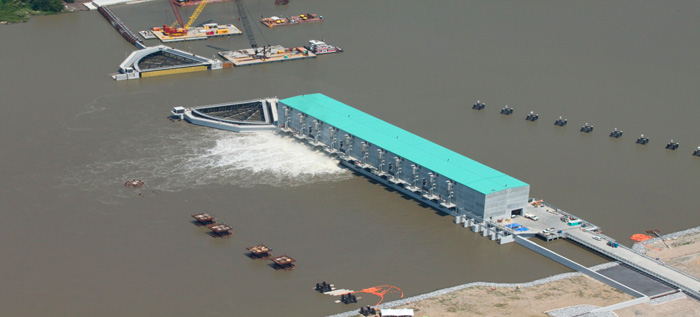Seven years after Hurricane Katrina devastated the New Orleans metro area, Hurricane Isaac made landfall on Aug. 28, 2012, as a Category 1 hurricane just southwest of the mouth of the Mississippi River with sustained winds of 80 mph. It was only 95 miles southeast of New Orleans. The most significant problem with Isaac was its slow movement, and as it crept north, it dumped enormous amounts of rain. Its slow movement and sustained strength long after landfall made it another potentially devastating storm. The situation, again, looked grim for the Big Easy. However, a stalling Isaac would not match Katrina’s flooding or damage because lessons were learned during and after Katrina, and changes and improvements had been made during the seven years since the city lay in ruin. Also, a massive, multimillion-dollar pump station, built on the Intracoastal Waterway, helped drain the Crescent City before extensive flooding could occur. Station operators on the ground watched as wind and rain that would have devastated in 2005 gushed from pump stations around the city and along its waterways, removing millions of gallons of water. In 2005, the system—levees, canals and pumps stations—was not able to handle Katrina’s onslaught. According to Rene Poche, public affairs officer with the Army Corps of Engineers—New Orleans District, prior to Hurricane Katrina, the Hurricane Protection System was a system in name only. “The Corps incorporated the lessons learned from Katrina by using the best science and engineering available to construct the best risk reduction system in the area’s history,” Poche said.

- More robust T-wall design for floodwalls
- Stricter clay requirements for the earthen levees
- Deep-soil mixing for greater stability
- MR Pittman Group (pump station)
- Louisiana Machinery/Caterpillar, Lufkin, Fairbanks Morse, Prime Controls (engines, gears, pumps and controls)
- Boh Brothers (404c floodwall)
- Bertucci (dredging and rock)
- Phylway (levees)
- King Fab (gates)

